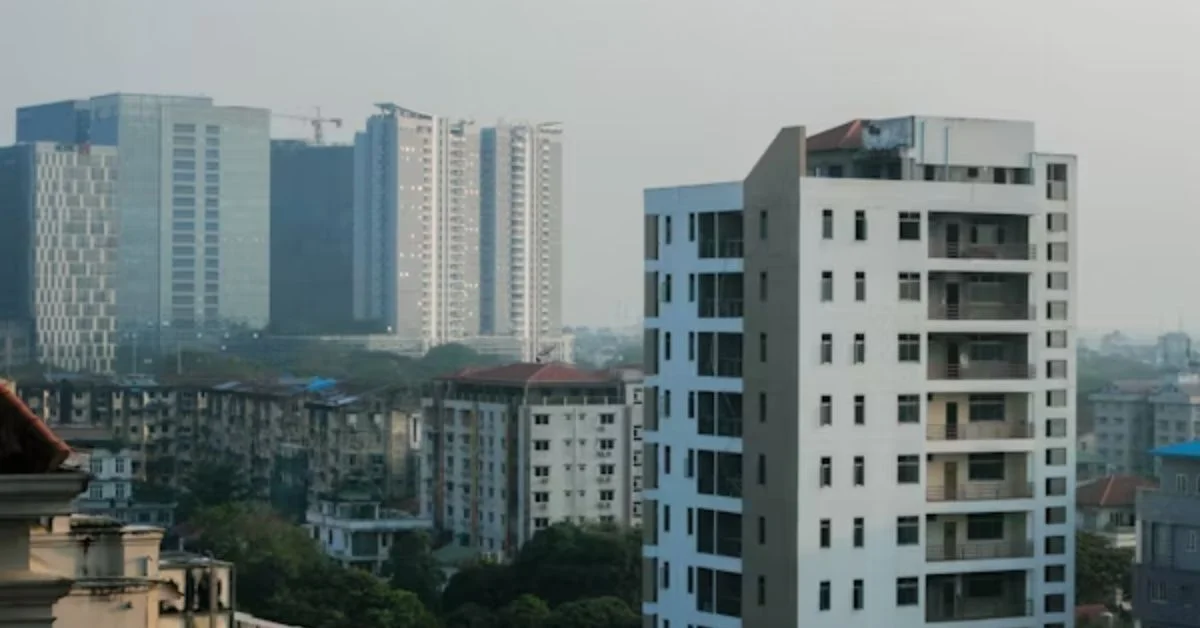Located in the heart of West Delhi’s sprawling residential maze, Sunder Vihar is a neighborhood within Paschim Vihar, often overlooked in conversations about the capital’s more high-profile urban zones. But for its residents and visitors, Sunder Vihar represents a unique mix of peaceful living, structured development, and growing urban convenience.
Whether you’re considering moving here, planning an investment, or simply researching Delhi’s urban geography, understanding Sunder Vihar in Paschim Vihar offers insight into how Delhi’s middle-class neighborhoods function, evolve, and balance tradition with modernity.
In this article, you’ll find a detailed look at Sunder Vihar’s geography, infrastructure, safety, residential character, transport links, local commerce, and what makes it an increasingly desirable part of Delhi’s suburban west.
1. What and Where Is Sunder Vihar?
Sunder Vihar is a planned residential locality situated within Paschim Vihar, a larger and more recognized sub-city in West Delhi. It’s not a commercial hotspot nor a chaotic urban pocket. Instead, it is a residential enclave—well-laid-out, secure, and preferred by many middle-class families for its proximity to essential services and peaceful environment.
Sunder Vihar represents an important element of Delhi’s post-1980s urban planning—a neighborhood designed for long-term settlement, not short-term migration. It has gradually evolved into a well-established micro-community, offering a high quality of life with access to both the bustling city and the quiet of residential life.
2. Geography and Location within Paschim Vihar
Sunder Vihar lies in the western corridor of Delhi, under the administrative zone of MCD (Municipal Corporation of Delhi) and within the broader Paschim Vihar area, which also includes residential societies like MIG Flats, Group Housing Societies, and HIG Complexes.
Key geographical highlights:
- Bordered by Outer Ring Road and Rohtak Road, two major arterial roads
- Close to Peeragarhi Chowk, a major transport junction
- Proximity to Metro stations like Peeragarhi and Paschim Vihar East
Its location makes it strategically connected yet insulated from main-road traffic, which is a rare quality in a city like Delhi.
3. History and Development of the Area
Paschim Vihar, including Sunder Vihar, developed as part of Delhi Development Authority (DDA)’s planned urban expansion in the late 1980s and 1990s. Sunder Vihar itself grew primarily as a group housing cluster, aimed at accommodating government employees, middle-class professionals, and service-class families.
Over time, residents built their own infrastructure and community institutions, leading to a stable, self-reliant environment. Today, it is recognized as one of the better-maintained pockets within West Delhi, offering consistent services and increasing property value.
4. Residential Layout and Types of Housing
Sunder Vihar is characterized by:
- Low-rise apartments (ground +3)
- Independent builder floors
- Plotted houses
- Group housing societies
The area benefits from well-paved internal roads, gated lanes, and green cover—factors that make it attractive for both families and retirees. Parking is managed within colony limits, and most residential blocks have dedicated security guards, often hired by Resident Welfare Associations (RWAs).
Rental rates are competitive, and ownership remains high, indicating long-term residency and neighborhood stability.
5. Amenities: Markets, Parks, and Public Spaces
Sunder Vihar supports everyday urban living needs with ease. It is not a high-street commercial zone, but a walk through the colony offers:
Markets:
- Local shops: grocery stores, chemists, stationery, milk booths
- Nearby shopping hubs: Jwala Heri Market, Metro Walk, Unity One Mall
Parks:
- Multiple small parks within the colony
- Children’s play areas and jogging tracks
- Community-maintained green spaces and benches
Public spaces:
- Community halls for weddings and gatherings
- Open areas for yoga, laughter clubs, and senior citizen groups
This well-balanced infrastructure promotes both physical health and social cohesion.
6. Education and Schools in Sunder Vihar
The area is surrounded by good quality educational institutions, including:
- St. Froebel Public School
- Rukmini Devi Public School
- Mother’s Pride (Pre-school)
- Bal Bharati Public School (nearby in Paschim Vihar)
Tuition centers and coaching academies operate out of homes or rented spaces, serving students from Class 6 to Class 12.
Education in Sunder Vihar is seen as a top priority, and many residents invest heavily in private schooling.
7. Healthcare Access: Clinics and Hospitals
For a residential area, Sunder Vihar offers robust healthcare access, both within and in adjacent zones:
Clinics and Diagnostics:
- Local general physicians
- Dental clinics
- Pathology labs and home sample collection
Hospitals nearby:
- Sri Balaji Action Medical Institute
- Maharaja Agrasen Hospital
- Apex Hospital
Emergency services like ambulance response and pharmacy access are timely, and many residents rely on family doctors living within the colony.
8. Transportation and Metro Connectivity
Sunder Vihar is among the better-connected residential colonies in West Delhi:
- Metro Stations: Peeragarhi (Green Line), Paschim Vihar East (Blue Line nearby)
- Bus Stops: DTC and cluster buses operate regularly from nearby Chowks
- Auto and cycle rickshaws: Available for last-mile access
- Access to Outer Ring Road: Easy connection to West, North, and South Delhi
Its location makes daily commuting feasible for professionals working in Rohini, Connaught Place, Rajouri Garden, or even Gurugram (via metro-rail combo).
9. Water, Power, and Waste Management
The area benefits from consistent water supply, mostly through:
- Delhi Jal Board connections
- Use of underground water tanks in some homes
- Private water deliveries during summer shortages
Electricity is reliable, with minimal outages and quick response from local BSES offices.
Waste management has improved, especially post-2020 with door-to-door garbage collection, segregation drives, and installation of community composting units in some blocks.
10. Safety, Policing, and Resident Welfare
Sunder Vihar has a strong sense of internal security, maintained largely through:
- Active RWAs (Resident Welfare Associations)
- Private security guards posted at colony gates
- Regular Delhi Police patrolling
- CCTV cameras installed at key entry/exit points
The area reports lower-than-average crime rates and sees quick civic response when issues arise, particularly because of organized resident activism.
11. Commercial Growth and Property Trends
While primarily residential, Sunder Vihar is witnessing slow commercial expansion in response to demand:
- Office spaces in converted basements
- Local salons, tuition centers, boutique stores
- Cafés and eateries gaining traction, especially near metro exit roads
Property Trends:
- Steady appreciation in property prices (5–7% annually)
- Demand for rental flats among nuclear families, professionals, and students
- Scope for builder floor redevelopment as older houses are sold
Real estate agents report that Sunder Vihar remains stable even during broader market slowdowns due to its high livability quotient.
12. Community Life and Cultural Activities
Community engagement is one of Sunder Vihar’s strongest features. Cultural life revolves around:
- Festivals: Diwali, Holi, Janmashtami, and Ganesh Chaturthi celebrated with lights and collective prayers
- RWAs organize health camps, talent shows, and tree plantation drives
- Senior citizens’ clubs meet weekly
- Children participate in colony cricket tournaments and school quiz fests
This sense of neighborhood belonging is what makes living here emotionally enriching, not just practical.
13. Challenges Facing the Neighborhood
Like most growing colonies in Delhi, Sunder Vihar faces its set of challenges:
- Parking congestion in peak hours
- Encroachment by roadside vendors near colony gates
- Occasional waterlogging in specific lanes during heavy monsoon
- Growing demand for green energy infrastructure (like solar panels)
- Limited space for new schools or healthcare centers due to saturation
However, resident-led initiatives often lead to quick fixes through petitions, protests, and participation in ward-level meetings.
14. Conclusion
Sunder Vihar is a mature, balanced, and self-sustained neighborhood that reflects the evolution of Delhi’s middle-class aspirations. It is not flashy, but it’s functional. It doesn’t seek luxury, but it offers security, community, and reliability—three things that define a good urban life in modern India.
As Delhi continues to urbanize, localities like Sunder Vihar hold the key to sustainable urban planning, where people, not just buildings, define the identity of a neighborhood.
If you’re planning to move to West Delhi or simply explore its residential gems, Sunder Vihar deserves more than a passing glance—it deserves a serious look.
15. FAQs
1. Where exactly is Sunder Vihar located?
Sunder Vihar is located in Paschim Vihar, West Delhi, near Peeragarhi Chowk and within walking distance of Peeragarhi Metro Station (Green Line).
2. Is Sunder Vihar a safe neighborhood?
Yes. The area has active Resident Welfare Associations, private security, and low crime rates compared to other parts of Delhi.
3. What kind of housing is available in Sunder Vihar?
You’ll find low-rise builder floors, apartments, independent plots, and some group housing societies. Both rent and purchase options are available.
4. Are there schools and hospitals nearby?
Yes. The area has access to multiple reputed schools and clinics, with major hospitals like Balaji and Agrasen within 10–15 minutes.
5. Is Sunder Vihar connected to Delhi Metro?
Absolutely. It is within walking distance of Peeragarhi Metro Station (Green Line) and close to Paschim Vihar East on the Blue Line.
For more information, click here.









